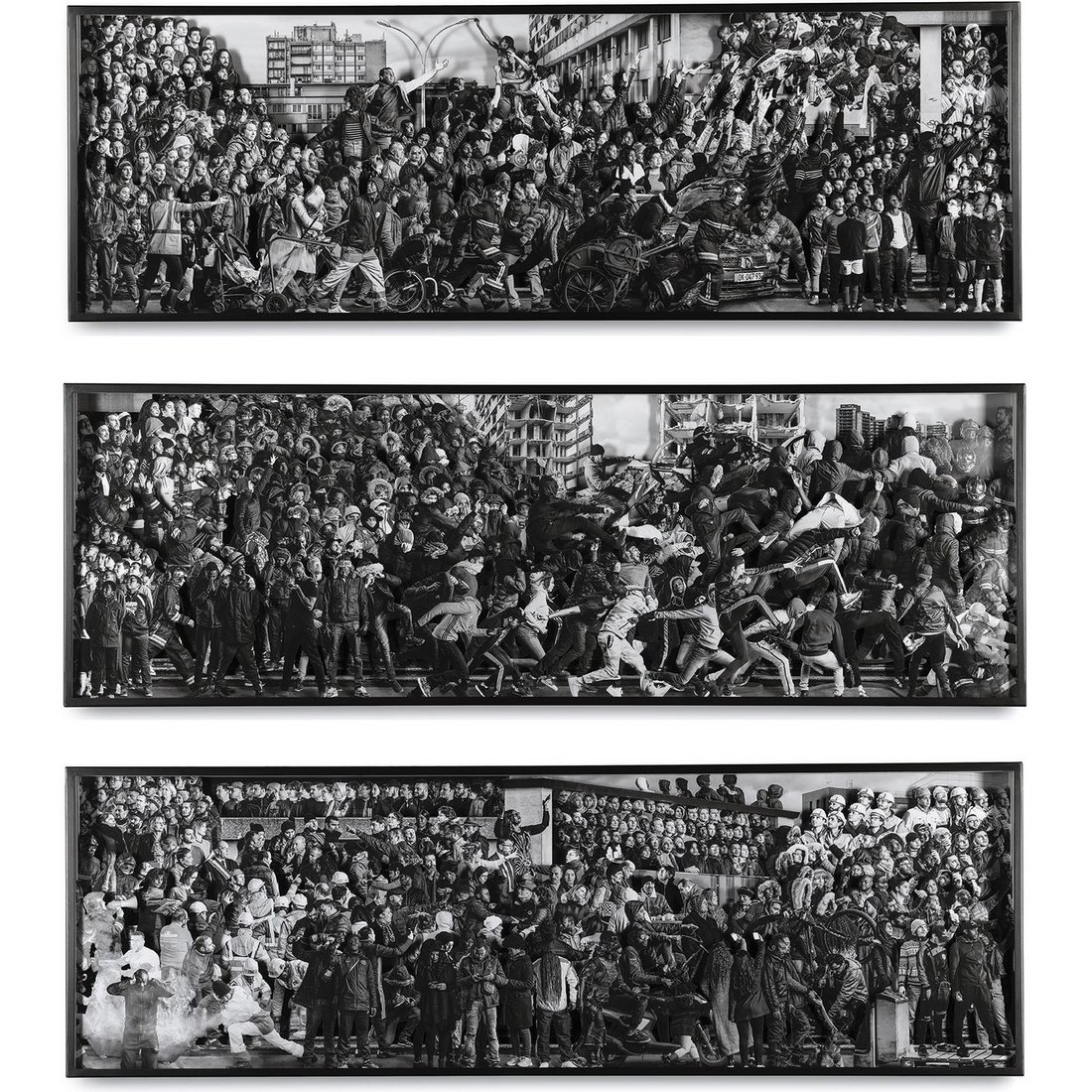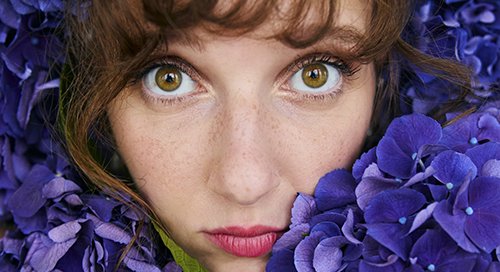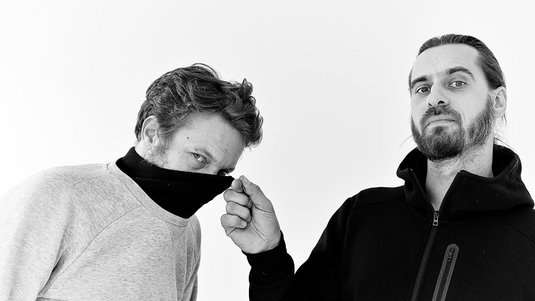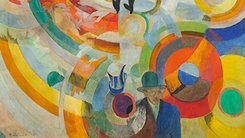
Le Centre Pompidou &... JR
There’s no need for an introduction. With his signature tinted glasses and his ever-present hat, JR (born in 1983) has crafted an unmistakable look—more than that, he’s created a true character. Over a 20-year career, the self-taught artist, who made trompe-l'œil collage his trademark, has expanded his creative methods—monumental in-situ installations, participatory murals, global tours, and even cinema—becoming a fixture in contemporary art. In October 2024, one of his collective murals, Chroniques de Clichy-Montfermeil, Work in Progress, joined the Centre Pompidou’s collection in the form of a photographic triptych, thanks to the generosity of the artist and his gallerist, Emmanuel Perrotin. The work can be viewed in the central aisle on Level 4 of the Museum.
This epic, hyper-realistic composition brings together around eight hundred portraits of residents from the neighborhoods of Clichy-sous-Bois and Montfermeil: children, social workers, firefighters, municipal agents, shopkeepers… Originally installed on-site in April 2017, the 36-meter-long mural was inaugurated by then-President François Hollande. This corner of Seine-Saint-Denis holds special meaning for JR. Back in 2004, he pasted portraits of the residents of the Bosquets housing project on the neighborhood’s walls (Portrait of a Generation). A year later, after the tragic deaths of two young people from Clichy-sous-Bois who were electrocuted while fleeing a police check, riots broke out in urban areas across France. Here’s a close-up with an artist in a hurry, ultra-connected, and always attuned to the pulse of his time.
"This donation is the result of a long conversation with the Centre Pompidou that began back in 2010. Chroniques de Clichy-Montfermeil is a symbolic work, because this town in Seine-Saint-Denis is, in many ways, where it all started for me. Created at the end of 2016 over several weeks, this monumental mural, inspired by a classical motif, reflects nearly twenty years of my work... But it’s also the story of a neighborhood, of a city that experienced tragic riots in 2005. Chroniques de Clichy-Montfermeil has a sociological aspect: it mirrors a community at a given moment, it’s a historical record, a distilled snapshot of its time. The work tells everyone’s story. It’s a puzzle where each person chose how they wanted to be represented: each individual was photographed alone, and then all the characters came together in the collage.
Chroniques de Clichy-Montfermeil has a sociological aspect: it mirrors a community at a given moment, it’s a historical record, a distilled snapshot of its time. The work tells everyone’s story.
JR
An amusing detail—Xavier Lemoine, the mayor of Montfermeil, appears in it. He’s the very one who filed a vandalism complaint against me when I was 18! He’s still the mayor, but he doesn’t hold it against me anymore… I’m especially proud because Chroniques de Clichy-Montfermeil was exhibited at the Palais de Tokyo in 2017, then installed on Clichy-sous-Bois Avenue in Montfermeil, where it was unveiled by President François Hollande himself in the presence of the residents. I feel incredibly fortunate that this collage is now at the Centre Pompidou. I would never have imagined one of my works joining the Museum’s collection!
Institutions can feel a bit intimidating. In the early 2000s, when I was 17 or 18, I was doing my first collages—what I called my Expo 2 Rue. I remember putting up posters outside Beaubourg… Of course, they’d get cleaned off by early morning. I would climb onto rooftops all around the Centre Pompidou, and from every angle, I could see that incredible building… It felt completely out of reach. Then, in 2007, at Place Igor Stravinsky, near the Niki de Saint Phalle and Jean Tinguely fountain, right next to the Centre Pompidou, I installed my large-format portraits of Palestinians and Israelis on a huge wall. These were the same images I’d pasted up for my Face 2 Face project on the wall separating Israel and the Palestinian territories... Now, Shepard Fairey’s mural occupies that space.
In the early 2000s, when I was 17 or 18, I was doing my first collages—what I called my Expo 2 Rue. I remember putting up posters outside Beaubourg… Of course, they’d get cleaned off by early morning.
JR
In 2011, at the Centre Pompidou’s invitation, I set up a kind of giant photo booth in the Forum as part of my Inside Out project. The idea was to offer printed, oversized portraits to visitors—totally free. Everyone could take one home! It was a huge success; there were hours-long lines, breakdowns… it was wild. I think we printed close to 12,000 portraits! And then in 2016, I designed the You Are Here exhibition-workshop for the Children's Gallery—another fantastic memory. Recently, I visited the Surréalisme exhibition, and I had a nostalgic thought for my friend Agnès Varda (who passed away in 2019), who loved the surrealists and often spoke to me about the importance of dreams in the creative process." ◼
Related articles
In the calendar
Portrait of artist JR, 2022
Photo © Grégoire Machavoine





